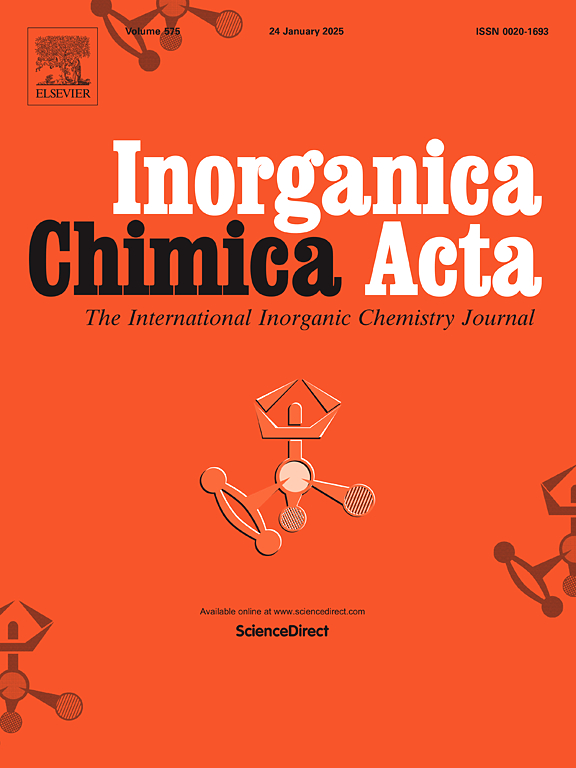Chemical preparation, thermal behavior, magnetic properties and biological activities of a new manganese chloride templated by piperazine (C4H12N2)[MnCl4(H2O)2]
IF 2.7
3区 化学
Q2 CHEMISTRY, INORGANIC & NUCLEAR
引用次数: 0
Abstract
In this work, we study a new manganese chloride templated by piperazine with the general formula (C4H12N2)[MCl4(H2O)2] that exhibits interesting properties and biological activities. The crystalline structure of (C4H12N2)[MnCl4(H2O)2] consists of anionic and cationic entities bound together by hydrogen bonds. The anionic part of this complex is formed by the diaquatetrachloromanganate(II) octahedra [MnCl4(H2O)2]2−, while the cationic part is composed of an organic component (protonated piperazine (C4H12N2)2+). The thermal behavior of (C4H12N2)[MnCl4(H2O)2] was studied by TGA (thermogravimetric analysis) between 50 and 860 °C under flowing air and by DSC (differential scanning calorimetry) in the temperature range of 25–400 °C, with a heating rate of 10 °C min−1. The title compound decomposes in three steps leading to the formation of manganese oxides, Mn2O3 and Mn3O4. The magnetic measurements indicate that (C4H12N2)[MnCl4(H2O)2] is predominantly paramagnetic with weak antiferromagnetic interactions between the Mn2+ centers, which presents five single electrons and adopts the high spin state. Regarding its biological activities, (C4H12N2)[MnCl4(H2O)2] exhibited a significant antioxidant capacity as measured by the DPPH assay. Additionally, in response to the urgent need for new antimicrobial drugs due to growing antibiotic resistance, the title compound was further evaluated for its antibacterial activity through the well diffusion test followed by the microdilution method. Bacterial growth inhibition and MBC/MIC determinations demonstrated the efficacy of (C4H12N2)[MnCl4(H2O)2] in killing various pathogenic bacteria. These findings highlight the significant biological activities of the compound, particularly its potential capacity to combat resistant bacteria.

求助全文
约1分钟内获得全文
求助全文
来源期刊

Inorganica Chimica Acta
化学-无机化学与核化学
CiteScore
6.00
自引率
3.60%
发文量
440
审稿时长
35 days
期刊介绍:
Inorganica Chimica Acta is an established international forum for all aspects of advanced Inorganic Chemistry. Original papers of high scientific level and interest are published in the form of Articles and Reviews.
Topics covered include:
• chemistry of the main group elements and the d- and f-block metals, including the synthesis, characterization and reactivity of coordination, organometallic, biomimetic, supramolecular coordination compounds, including associated computational studies;
• synthesis, physico-chemical properties, applications of molecule-based nano-scaled clusters and nanomaterials designed using the principles of coordination chemistry, as well as coordination polymers (CPs), metal-organic frameworks (MOFs), metal-organic polyhedra (MPOs);
• reaction mechanisms and physico-chemical investigations computational studies of metalloenzymes and their models;
• applications of inorganic compounds, metallodrugs and molecule-based materials.
Papers composed primarily of structural reports will typically not be considered for publication.
 求助内容:
求助内容: 应助结果提醒方式:
应助结果提醒方式:


